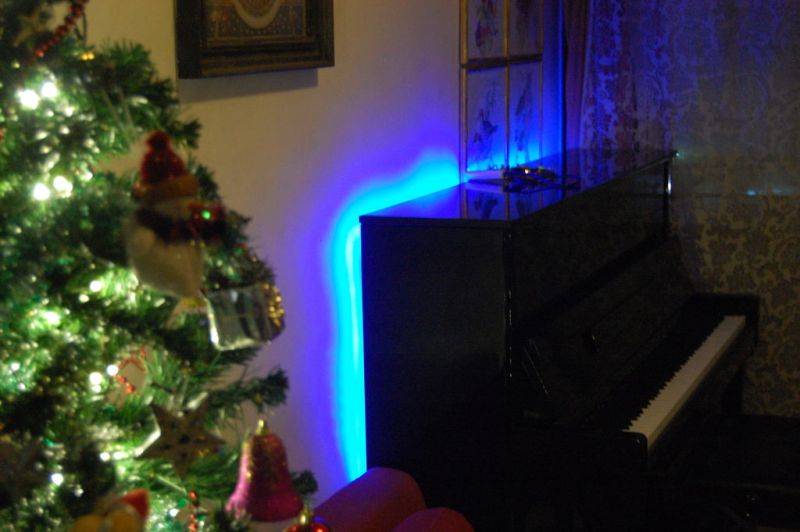That old upright piano still sounds great, and now it can easily have its own special effects. [DangerousTim] added LED strips which change color when he tickles the ivories. The strips are applied along the perimeter of the rear side of the upright causing the light to reflect off of the wall behind the instrument. This is a familiar orientation which is often seen in ambilight clone builds and will surely give you the thrill of Guitar Hero’s brightly changing graphics while you rock the [Jerry Lee Lewis].
Key to this build is the electret microphone and opamp which feed an Arduino. This allows the sound from the piano to be processed in order to affect the color and intensity of the LED strips. These are not addressable, but use a transistor to switch power to the three colors of all pixels simultaneously.
We think there’s room for some clever derivative builds, but we’re still scratching our heads as to how we’d use addressable pixels. Does anyone know a relatively easy way to take the mic input and reliably establish which keys are being played? If so, we can’t wait to see your ambilight-piano-clone build. Don’t forget to tip us off when you finish the hack!















Looks great. You could take the fourier transform and divide the spectrum into 3 or so bands. It would need some calibration to look good. Individual keys would be difficult with one sensor/mic I think. Or not?
If a soundcard oscilloscope can show practically to 31 band resolution, I would think so.
Better by far than on a TV, the effect might even be grand under one.
This is a color organ nonetheless. Might be easier to put a midi strip under the keys and interpret the midi stream and extend it other sound generators.
Using a tuner circuit would allow it to change color based on chord or note being played. Key could be selectable by a micro controller so you would need 12 colors and the first color would be the root note of the scale.
I mean seven colors as there are seven steps in a scale^
How about some kind of magnetic sensors to tell if certain strings are moving? The strings are steel aren’t they?
I don’t mean to be derogative about the project, as another commented, a color organ. I suppose there’s a generation or two that hadn’t played with them Make has YouTube video with Colin builing a 3 channel solid sate. Today with microprocessors an tri-color LEDs KIDcould get gramps whoa man a lot, if gramps is still smoking or using. As inexpensive flat screen TVs are at Walmart On my chose not to use discrete light sources.
“Does anyone know a relatively easy way to take the mic input and reliably establish which keys are being played?”
Any multi-column bargraph LED frequency display circuit. Connect color outputs as you like.